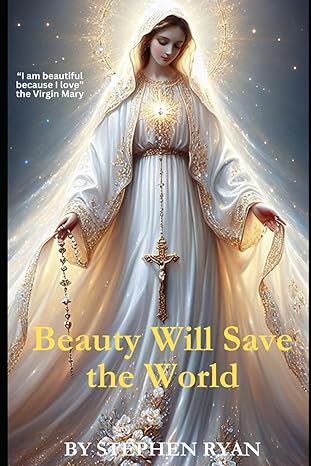Mystic Anne Catherine Emmerich Amazing visions of the resurrection of Jesus
Blessed Anne Catherine Emmerich, a 19th-century German mystic, claimed to have received detailed visions of the Resurrection of Jesus, recorded primarily in The Dolorous Passion of Our Lord Jesus Christ and The Life of Jesus Christ and Biblical Revelations, transcribed by Clemens Brentano. Below, I summarize the key elements of her visions of the Resurrection, based on her accounts, while noting the context of Brentano’s potential editorial influence and the Catholic Church’s view of private revelations as non-binding.
Key Elements of Emmerich’s Visions of the Resurrection
Emmerich’s visions of the Resurrection are vivid, symbolic, and rich with details not found in the canonical Gospels. They blend historical, spiritual, and mystical imagery, reflecting her deep piety and Catholic worldview. The main aspects include:
- The Descent into Hell (Harrowing of Hell):
- Before the Resurrection, Emmerich saw Jesus’ soul descending into the “limbo” or “prison” of the righteous dead (a concept rooted in Catholic tradition, based on 1 Peter 3:19–20).
- She described Jesus appearing radiant, liberating patriarchs and prophets (e.g., Adam, Eve, Moses, David) from a dark, misty realm. The souls rejoiced and followed Him in a triumphant procession.
- Satan was depicted as bound and cast into a deeper abyss, symbolizing Christ’s victory over evil. This aligns with apocryphal texts like the Gospel of Nicodemus.
- The Moment of Resurrection:
- Emmerich envisioned Jesus’ body in the tomb, radiant and transfigured, reuniting with His soul in a supernatural light. The tomb shook, and angels attended Him.
- She described a dramatic scene where a “dragon-like monster” (possibly symbolizing Satan or death) attempted to obstruct the Resurrection but was repelled by divine power. This imagery is not scriptural but reflects mystical or allegorical interpretations.
- The stone sealing the tomb was rolled away by angels, and Jesus emerged in a glorified body, radiant and bearing the marks of His wounds, which glowed with light.
- Appearance and Atmosphere:
- Jesus’ resurrected body was described as luminous, no longer subject to earthly limitations. He passed through the tomb’s stone and appeared in a form both human and divine.
- The garden around the tomb was bathed in supernatural light, and the guards stationed there fell unconscious or fled in terror, overwhelmed by the divine presence.
- Angels, particularly two prominent ones, were present, one of whom announced the Resurrection to the holy women later.
- Interactions with Others:
- Emmerich’s visions include Jesus appearing first to the Virgin Mary in a private, spiritual encounter before His public appearances. Mary, in a state of prayer, saw Him in glory, and they shared a moment of profound joy.
- Subsequent appearances to Mary Magdalene, the women at the tomb, and the disciples (e.g., on the road to Emmaus) align with Gospel accounts but include additional details, such as specific dialogues or emotional reactions not recorded in Scripture.
- For example, she described Mary Magdalene’s confusion and eventual recognition of Jesus, emphasizing her love and repentance, with added details about the garden setting and Jesus’ radiant garments.
- Symbolic and Mystical Elements:
- Emmerich saw the Resurrection as a cosmic event, with the heavens rejoicing and the souls of the righteous being released. She described a “new light” spreading over creation, symbolizing salvation.
- She envisioned the wounds of Christ as radiant “gates” through which divine grace flowed, a poetic image emphasizing their redemptive power.
- The presence of angels and the temporary blinding of the guards underscored the supernatural nature of the event, beyond human comprehension.
Context and Critical Notes
- Brentano’s Influence: These visions were recorded by Clemens Brentano, a Romantic poet prone to embellishment. Emmerich spoke in dialect, and Brentano translated and edited her accounts, potentially adding symbolic or poetic elements (e.g., the dragon-like monster). Critics argue that some details reflect Brentano’s imagination or 19th-century Catholic piety rather than Emmerich’s original visions.
- Alignment with Tradition: Many elements align with Catholic tradition, such as the Harrowing of Hell and Jesus’ appearance to Mary, which appear in apocryphal texts or medieval theology. However, specifics like the dragon or detailed dialogues lack historical corroboration.
- Church’s Stance: As private revelation, Emmerich’s visions are not binding for Catholics. Her beatification (2004) affirms her holiness, not the authenticity of every vision. The Church encourages discernment, noting that visions may blend divine inspiration with human imagination.
- Historical Plausibility: While the core Resurrection event aligns with Gospel accounts (e.g., Matthew 28, John 20), Emmerich’s added details (e.g., cosmic imagery, specific angelic actions) are unverifiable. The Ephesus house discovery tied to her visions lends some credibility to her supernatural insight, but it doesn’t directly validate her Resurrection account.
Conclusion
Anne Catherine Emmerich’s visions of the Resurrection depict a triumphant, supernatural event filled with vivid imagery: Jesus’ descent to liberate the righteous, His radiant emergence from the tomb, angelic presence, and appearances to Mary and others. These accounts enrich Catholic devotional life for some, offering a meditative perspective on the Resurrection. However, their authenticity is debated due to Brentano’s editorial role and the lack of historical evidence for many details. Believers may find spiritual value in her visions, while skeptics may view them as a mix of piety, imagination, and poetic license.
If you’d like a deeper dive into a specific aspect (e.g., the Harrowing of Hell or Jesus’ appearance to Mary) or a comparison with Gospel accounts, let me know!


